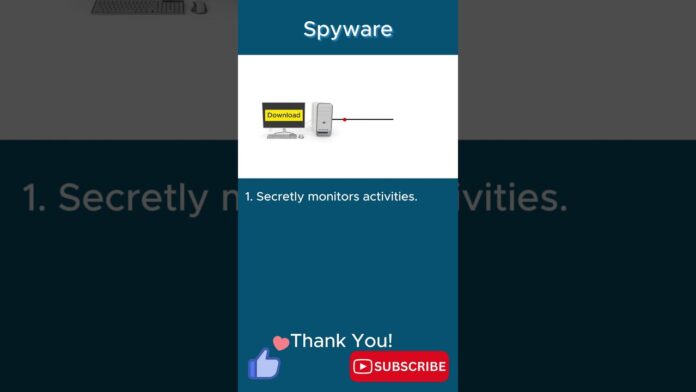In the realm of cybersecurity, spyware represents a pervasive and insidious threat to network integrity and user privacy. This clandestine form of malware operates covertly, infiltrating systems, monitoring activities, and harvesting sensitive information without the user’s knowledge or consent. In this article, we delve into the intricacies of spyware, shedding light on its modus operandi, detection methods, and strategies for prevention.
Understanding Spyware:
Spyware is a type of malicious software designed to secretly monitor and collect information from computers and networks. It encompasses a range of malicious functionalities, including:
- Keylogging: Capturing keystrokes entered by users to steal login credentials, passwords, and sensitive data.
- Screen Capture: Recording screenshots of user activity, including browsing sessions, emails, and document contents.
- Data Theft: Harvesting personal and financial information, such as credit card numbers, social security numbers, and online banking credentials.
- Surveillance: Monitoring online activities, web browsing habits, and communication channels to gather intelligence for espionage or targeted advertising purposes.
Modes of Spyware Transmission:
Spyware can infiltrate systems through various vectors, including:
- Malicious Websites: Visiting compromised or malicious websites that host drive-by-download attacks or exploit kits capable of silently installing spyware on vulnerable systems.
- Email Attachments: Opening infected email attachments or clicking on links leading to malicious websites distributing spyware payloads.
- Software Bundling: Downloading and installing free or pirated software bundled with spyware components that surreptitiously install alongside legitimate applications.
- Removable Media: Inserting infected USB drives, external hard disks, or other removable media containing spyware-infected files into vulnerable systems.
Detecting and Mitigating Spyware:
Detecting and mitigating spyware requires a multi-layered approach to network security, including:
- Antivirus and Anti-Spyware Software: Deploying robust antivirus and anti-spyware solutions capable of detecting and removing spyware infections from compromised systems.
- Firewalls and Intrusion Detection Systems (IDS): Implementing firewalls and IDS solutions to monitor network traffic, detect suspicious behavior indicative of spyware activity, and block malicious connections.
- Behavioral Analysis: Employing behavioral analysis techniques to identify anomalous system behavior, such as unauthorized access attempts, data exfiltration, or unusual network traffic patterns associated with spyware activity.
- User Education and Awareness: Educating users about the risks of spyware, phishing scams, and unsafe browsing habits to reduce the likelihood of inadvertently downloading or installing spyware on their devices.
Prevention Strategies:
To prevent spyware infections and safeguard network integrity, organizations should implement the following preventive measures:
- Software Updates: Keeping operating systems, applications, and security software up-to-date with the latest patches and security updates to mitigate known vulnerabilities exploited by spyware.
- Download Vigilance: Exercising caution when downloading and installing software from untrusted sources, verifying the authenticity and integrity of software downloads to avoid inadvertently installing spyware-infected programs.
- Access Control: Implementing least privilege principles and role-based access controls (RBAC) to restrict user permissions and limit access to sensitive data and resources, reducing the risk of spyware infiltration and data exfiltration.
- Network Segmentation: Segmenting network infrastructure into separate zones or VLANs to contain spyware infections and prevent lateral movement within the network, limiting the scope of potential damage and data compromise.
Spyware poses a significant threat to network security and user privacy, leveraging stealthy tactics to infiltrate systems, steal sensitive information, and compromise organizational integrity. By understanding the tactics and behaviors of spyware, implementing proactive detection and mitigation measures, and fostering a culture of cybersecurity awareness and vigilance, organizations can effectively mitigate the risks posed by spyware and safeguard their networks from clandestine intrusions and data breaches. In the ever-evolving landscape of cybersecurity, resilience, innovation, and collaboration are essential in the ongoing battle against spyware and other emerging threats, ensuring the integrity, confidentiality, and availability of network resources and data assets.
